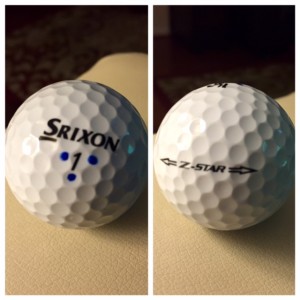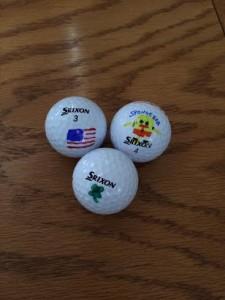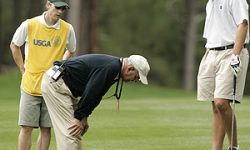All you workout enthusiasts will love this week's rule Club Golf Academy article, as I cover when you can and cannot “Lift” on the course. This week’s USGA Rules of the Week will help with identifying your golf ball: Rule 12-1 and 12-2. First and foremost, you must know that the responsibility for playing the proper ball rests with each competitor. Players should put an identification mark on his/her ball that is easily recognizable. Properly marking your ball with a unique identification mark before the round takes seconds but saves time and strokes. Creating a custom ball mark can be fun, too.
Three of a Kind

Before each round, you should select at least three golf balls that you will put a unique identification mark on. Sometimes I like to live a little and only mark one, channeling my inner Steve Stricker, thinking/praying I will only need one ball that round. The identification mark you use should be something drawn on your ball with a sharpie - such as a series of dots, a smiley face, or possibly a four-leaf clover for good luck - that will help you definitively say that the ball you found is your ball. Let your imagination go wild with this. Furthermore, the three or more balls you select should be different from each other (i.e. different number on the ball, etc.) so that you can differentiate between your own golf balls in case you hit a provisional ball later on.
At the start of the round when you introduce yourself to your playing competitors, all of the members of your group should identify their golf balls to ensure that no two players are playing a ball that may be confused for another. Again, this is where a unique identification mark is useful. Every time you change your ball or are looking for a lost ball, the player whose ball it is should announce the type of ball and identifying mark(s) to the group. The Club Golf Academy can't stress how important it is to clear up any confusion that may occur when looking for lost balls or when you and your playing partners hit shots close to each other.
Lift and Replace
Now here’s where the lifting comes into play. For all the gym rats on the course, do not fret if you run into a scenario on the course where you come up to a ball and cannot identify it. If you cannot identify a ball at rest but believe that the ball is yours, you are permitted to mark the ball and lift it for identification, without penalty. If you wish to lift your ball to identify it, you must announce your intention to your playing partners and allow them an opportunity to observe the lifting and replacement. The ball must not be cleaned beyond the extent necessary for identification when lifted under Rule 12-2. Additionally, the player must replace the ball back into the spot where the ball originally lay, recreating the original lie.
Failure to Comply
However, if the ball lifted is the player’s ball and he fails to comply with all or any part of the procedure listed under Rule 12-2, he incurs a penalty of one stroke. The player also incurs a penalty of one stroke if he lifts his ball in order to identify it without having good reason to do so. If the lifted ball is the player’s ball and he fails to replace it, he incurs a penalty of one stroke. Make sure your playing partners are aware and agree with you if you wish to lift your ball. Also be on the lookout for your playing partners so no illegal lifting goes on. You don’t want them getting any unfair ball-lifting reps in.
 So now you know when you can and cannot lift on the golf course. I hope this week's Club Golf Academy article will help clarify this rule for you and your playing partners throughout the season. For more information about marking your ball, check-out Golf Digest's take on the matter.
So now you know when you can and cannot lift on the golf course. I hope this week's Club Golf Academy article will help clarify this rule for you and your playing partners throughout the season. For more information about marking your ball, check-out Golf Digest's take on the matter.
Note: if the original lie of a ball to be replaced has been altered, see Rule 20-3b, Placing and Replacing.
**Written by Nicholas Heyrman, National Collegiate Club Golf Association Director of Tournament Operations




